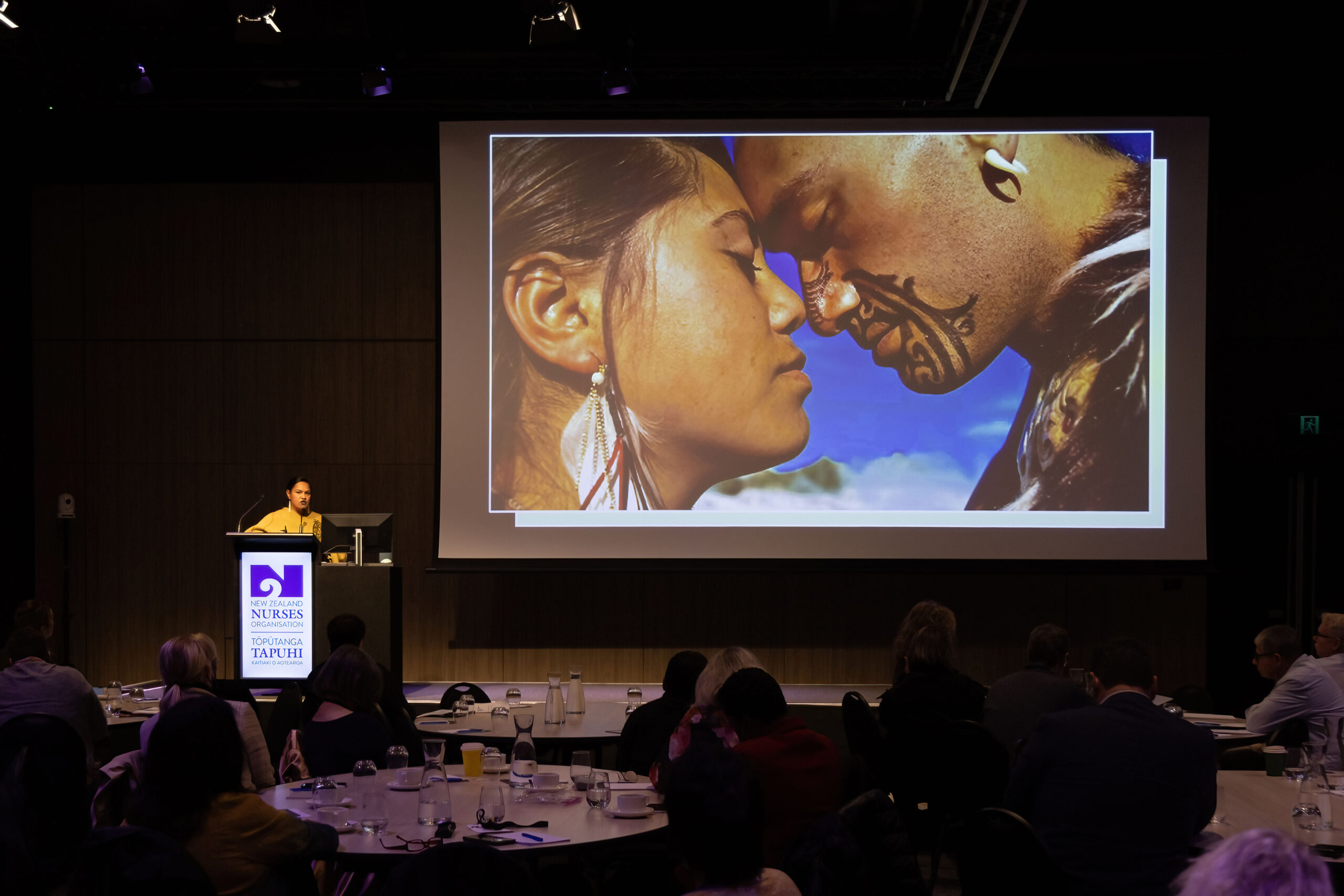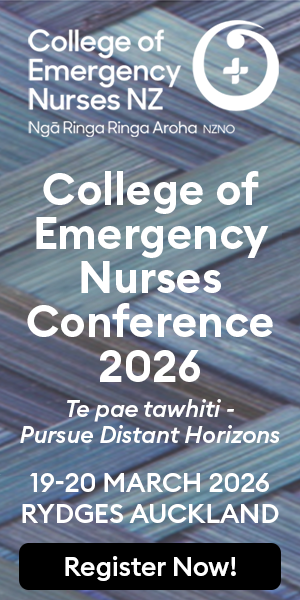CCDM ‘not perfect’
New Zealand nursing workforce specialist Rhonda McKelvie said nursing was at a “pivot point” after 15 years of safe staffing tool CCDM (care capacity demand management) had not yielded hoped-for results.
McKelvie, who helped develop CCDM — which was promised to fix staffing woes under the 2018 nursing accord — said the tool was not perfect. It had no bicultural foundation or te āo Māori perspective and had morphed away from its intent.
“This was meant to be a tool to help — but it’s become a tool to push down,” McKelvie said.
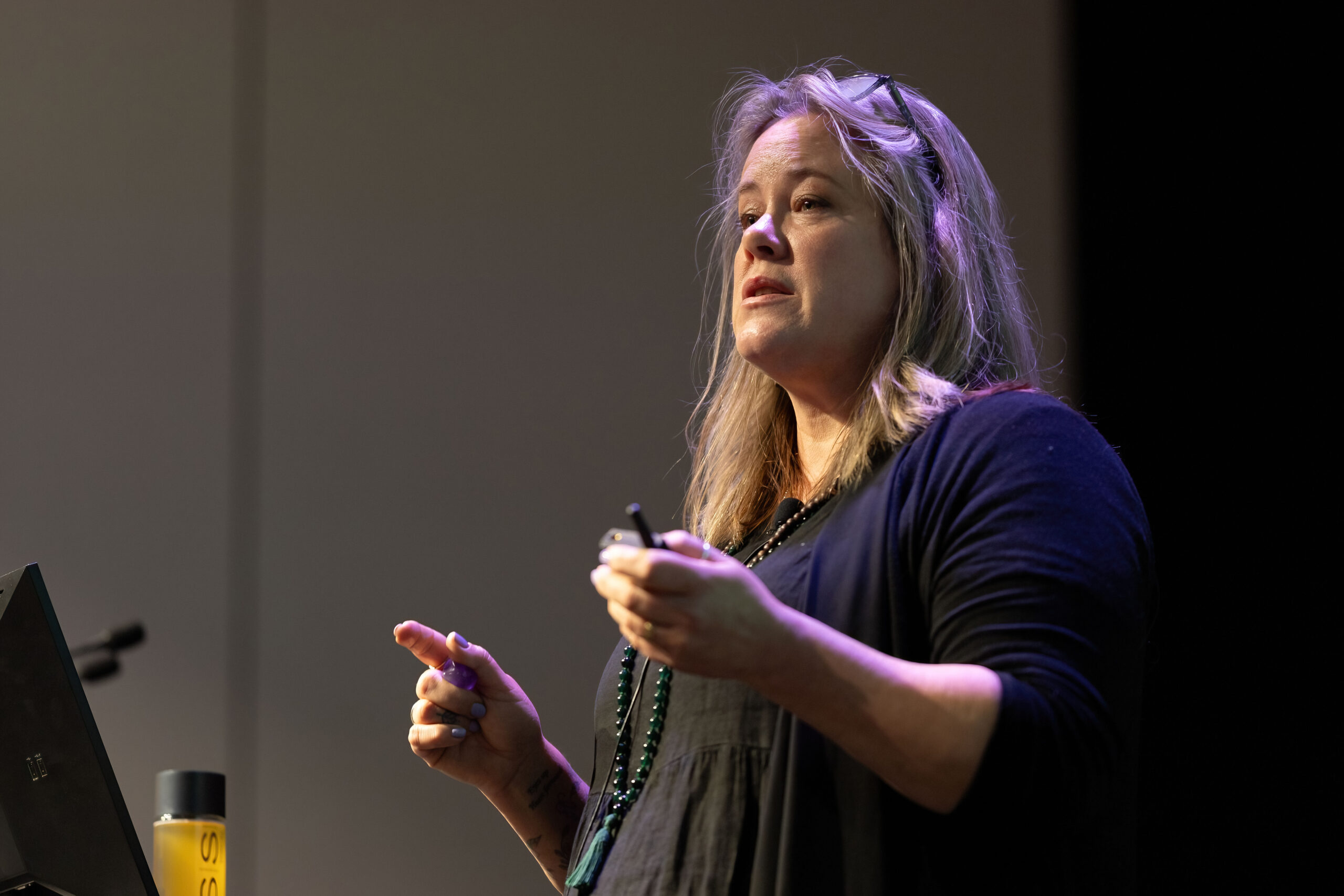
“I didn’t expect to find, in our good intentions as nurses, designing something to help nurses with nursing, we would actually create a monster that is subordinating the lived experience and knowledge a little bit further down in the organisation.”
But CCDM had “great” potential, had brought hundreds more nurses into the system and McKelvie hoped it would not be thrown out “wholesale”.
Her research found its staffing data was “compelling” — but there had been an inexplicable failure to act on it by employers.
Despite nurses’ skill and knowledge, “we are not valued as credible knowers,” she said.
“We are conveying to you that we are on fire and we need help. And you are saying ‘sorry, can’t help you, good luck’. How is that even possible?”
‘The master’s house’
Nurses had instead become “colonised” by the priorities of employers, worrying about targets, flow, budgets and performance — rather than focusing on caring for patients.
“We’ve come to believe as nurses that this is our work,” she said. “As well as doing all the work of looking after the patients . . . we’re trying to concentrate on all these performance indicators.”
In an effort to be heard, nurses had tried to to talk in the managerial “language of the master” — squashing their knowledge and testimony into data. But this had failed and only added workload.
While she did not want to see CCDM discarded completely — it had brought hundreds of new nurses into the workforce — McKelvie believed ratios could create a “protected space” for nurses.
A blend of the best tools including CCDM might work — but it had to be enforced by legislation and be bicultural.
“World view alone tells us that it’s likely patient safety and safe staffing is fundamentally different for Māori nurses and for Māori patients. But we’ve never tested that, we’ve never developed and grown that. That’s a flaw.”
McKelvie said by working collectively, as in Queensland, nursing could get to a “brilliant” place here.
Nurse leaders from around the world urged New Zealand’s nursing workforce to “use their power” to win safe staffing ratios, at a two-day nursing summit in Wellington recently.
He Tipua conference on nurse-to-patient ratios brought together international and local nursing, health and union leaders in Pōneke, Wellington, to share insights on how to implement legally enforceable ratios in Aotearoa, New Zealand.
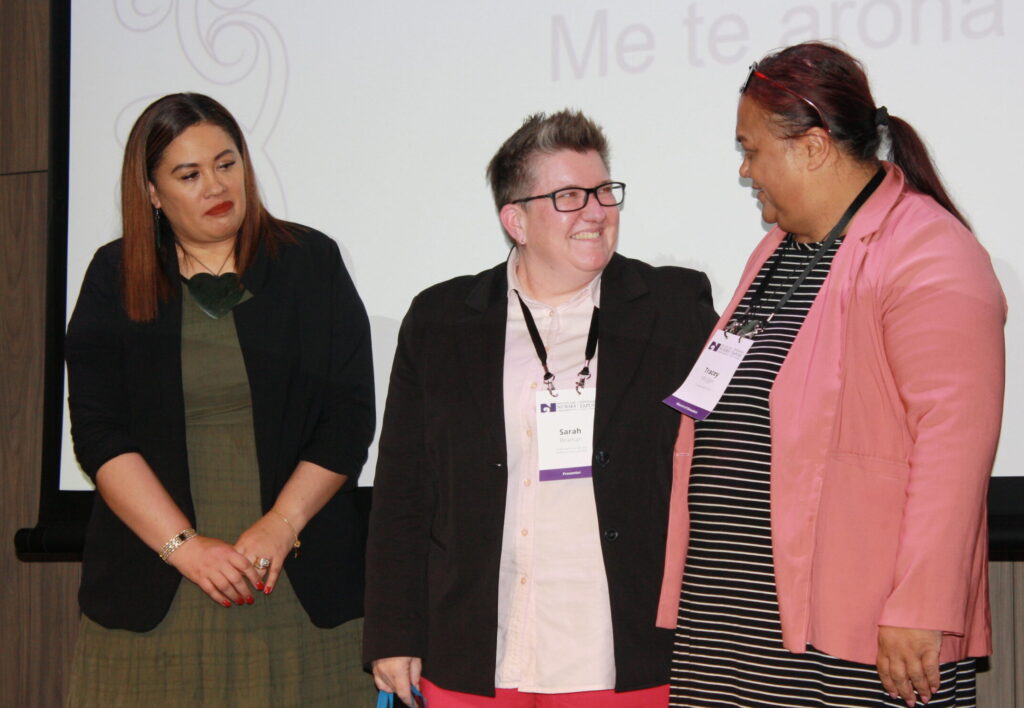
Sarah Beaman, secretary of the Nurses and Midwives Union in Queensland (QNMU) — where ratios were won in acute, medical and surgical wards in 2016 after a 10-year campaign — said NZNO could absolutely do the same thing here.
“Really, I want to do a call for action to you guys – you may not recognise your power but . . . my God you’re influential – use it.”
In Queensland, she said they knew it would be a long campaign — but they had a vision and were prepared to see it through.
“It’s been a long journey, it’s not over and it’s also been really worth it. Every win you get, you’re making a difference — not only for your members, but for the community, for someone’s loved one, and it fills your bucket.”
From despair and anger after 2012’s slashing of thousands of health jobs, came hope, then action, with the union’s “hands off our public health system” campaign.
Beaman said she and her family were personally enraged by the “ethical distress” they were facing in their nursing and health roles — but suddenly had a beacon of hope.
‘The risk of someone dying rising by seven per cent, really should matter to everyone.’
That led to the 2014 “ratios save lives” campaign, backed by evidence showing that every patient added to a nurse’s workload increased their chance of dying by seven per cent.
“That’s someone’s family — it’s someone’s loved one. This person matters to someone. The risk of someone dying rising by seven per cent, really should matter to everyone.”
The state opposition Labour Party agreed and implemented ratios in Queensland’s public acute, medical and surgical wards after gaining power in 2015.
Ratios in acute adult mental health units and state-run aged care facilities followed, while work was continuing on midwifery ratios, operating theatres, prisons and all aged care facilities.
Beaman said “aim for the stars” but be ready for a phased approach, over time.
‘They solved their shortage because when they had enough nurses, they attracted more nurses.’
Collaboration — including with health departments — was essential, as was bringing the stories of members together with research-based evidence.
“Stories really matter. I can open a door to have them heard but they need to be there.”
Commissioning and bringing together evidence on how ratios prevented death, readmission and time in hospital meant the “ratios save lives” campaign became “ratios save lives … and money”.
Beaman said community and political influence was “crucial”. She had worked out that one in every 52 eligible voters in New Zealand was an NZNO member. “We are trusted, we are pretty reputable . . . The influence is huge!”
‘The data don’t lie’
University of Pennsylvania nursing professor Linda Aiken said decades of international research proved safe nurse-to-patient ratios saved lives — and money. They also encouraged more nurses into the workforce.
“In California, they had an acute shortage of nurses before enacting ratios, and within two years solved their shortage because when they had enough nurses, they attracted more nurses.”
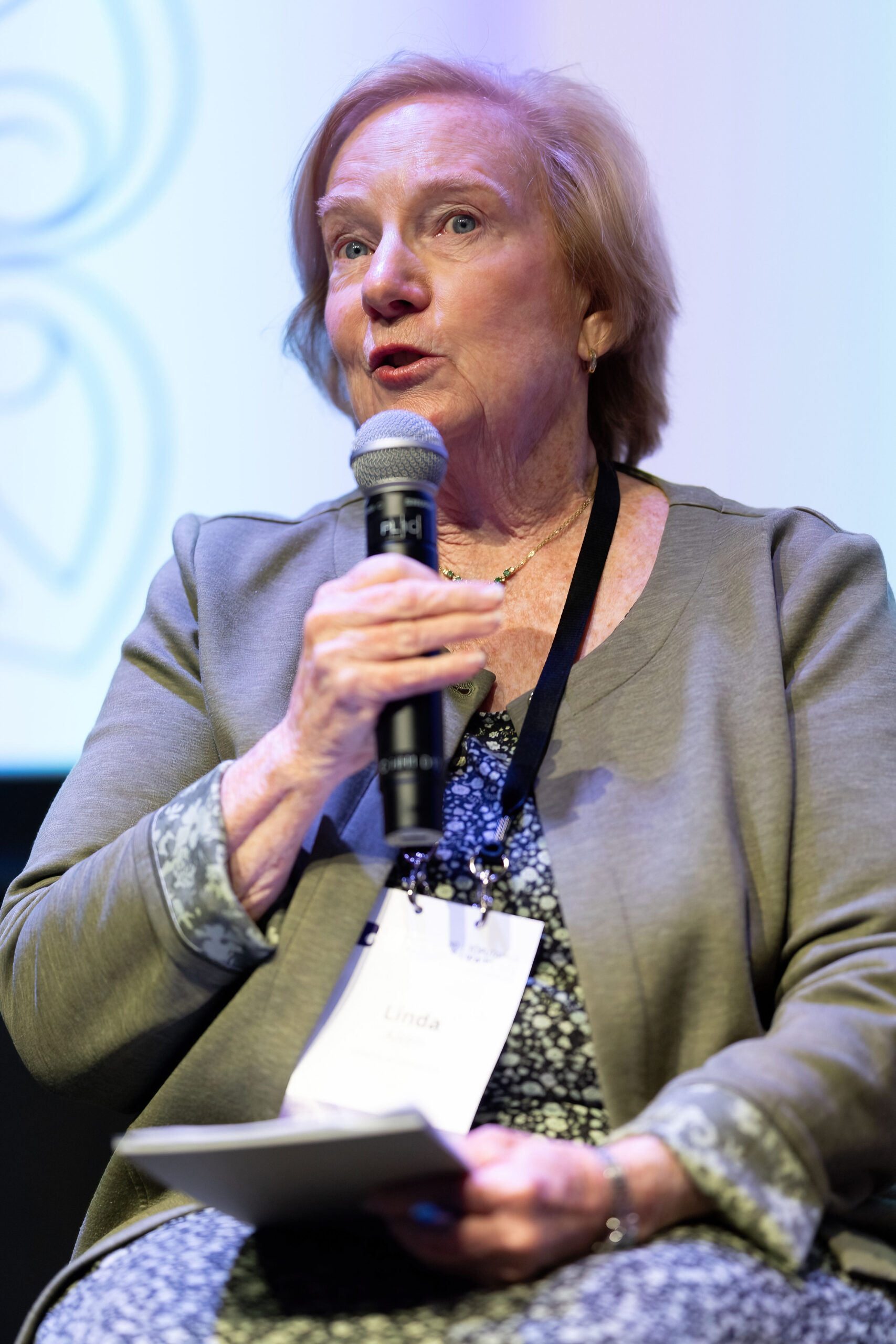
Aiken — an expert on the causes and consequences of nurse shortages in the United States and globally — has spent three decades researching the impact of unsafe staffing on patients, including in New Zealand.
She said having the evidence could help safe staffing campaigns get across the line — as had occurred in Queensland and her own home state.
There, in Pennsylvania, Aiken said nurses had been trying to pass ratios for 20 years, before her Penn nursing center research convinced the state health department last year.
“Research rarely makes all the difference but it certainly helps,” said Aiken, adding she “loved” the concept of ratio justice. “The data don’t lie.”
In Queensland, her research showed the new ratios of one nurse to four patients in the day and 1:7 at night for acute, medical and surgical wards saw nurses caring for one to two fewer patients in the day and one to three fewer at night.
That resulted in a 9 per cent lower chance of dying in hospital, 6 per cent lower odds of re-admission, 3 per cent shorter stays and 145 deaths avoided. The ratios also saved an estimated US$20 million.
‘Every hospital is not the same, and the outcomes are not the same, no matter if your doctor’s good or not — because it’s nurses who are maintaining the quality and standard of care.’
Over 30 years of researching, Aiken said the impact of minimum safe staffing ratios on patient outcomes was irrefutable — no matter where or what type of hospital system they were in.
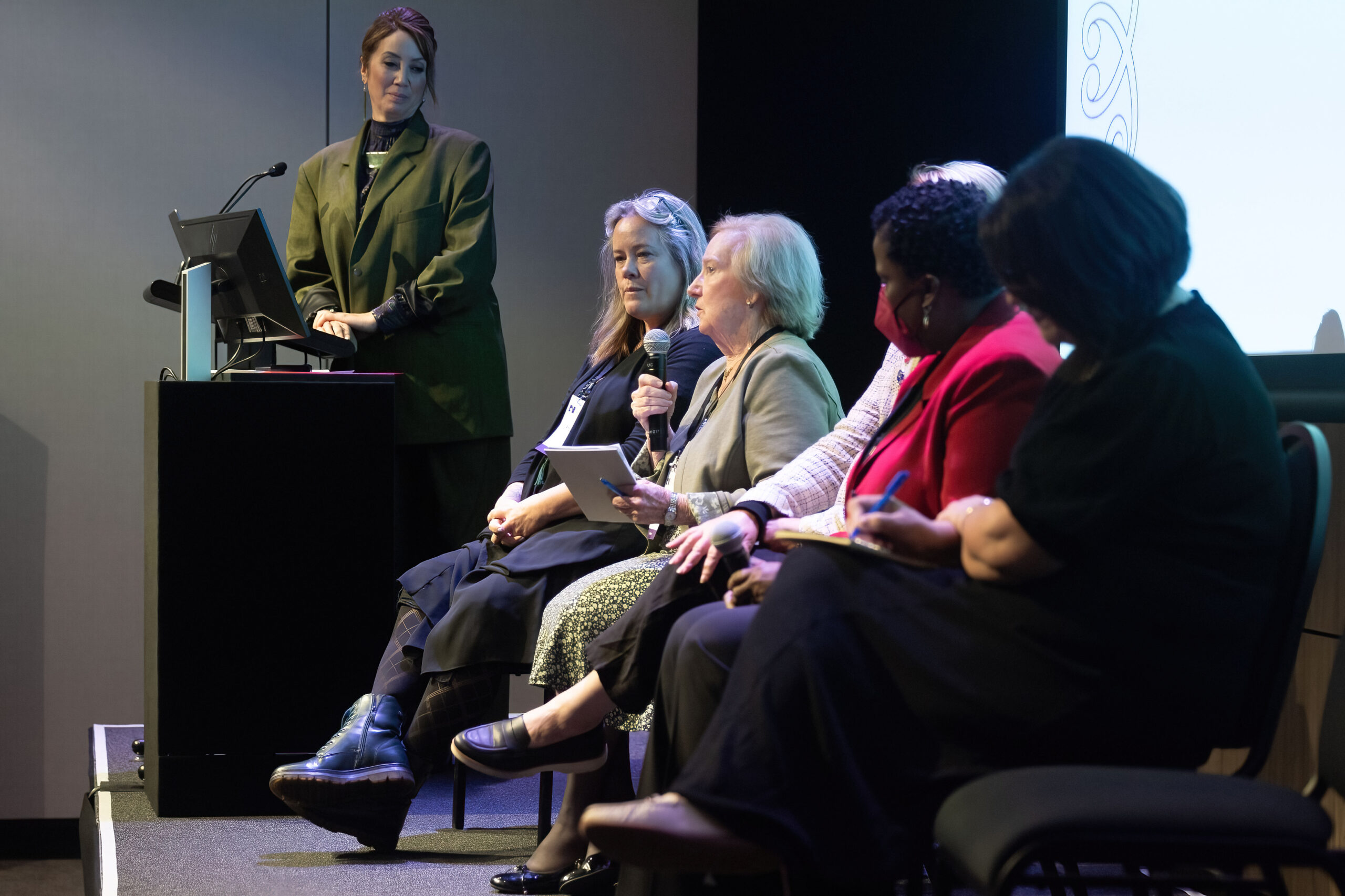
For example, when the United States was considering cutting back hospital nurses in favour of nursing “teams” recently, a new Penn study, Projections of shortages of hospital RNs foster unsafe staffing practices, showed a 10 per cent drop in nurses would cost 10,000 lives.
Nurse staffing levels — along with their training and work environments — were critical in whether patients survived resuscitation in hospital, Aiken said. Research into surgery survival rates showed, too, that nurses were key to saving lives post-surgery.
“Every hospital is not the same, and the outcomes are not the same, no matter if your doctor’s good or not — because it’s nurses who are maintaining the quality and standard of care and are extremely important in your outcomes.”
Research had also shown the problem wasn’t that there weren’t enough nurses — but that they didn’t stick around in poor work environments. And the number one way to fix that was to improve staffing levels.
Given “overwhelming evidence” that minimum safe nurse staffing brought fewer deaths, shorter stays and fewer readmissions, the cost of more nurses “never cost as much as you think”, Aiken said.

Queensland Health’s chief nursing and midwifery officer Shelley Nowlan said the state health service had worked with the nurses and midwives union on implementing ratios.
Research by Aiken’s Penn center on the patient benefits had been key — although the Queensland Government also did its own evaluation.
While the benefits of ratios in other hospital departments — such as emergency, and operating theatres — had been less clear in trials, other improvements had been made, such as introducing ED waiting room and ambulance triage nurses, Nowlan said.
A global movement?
Bonnie Castillo, executive director of the 225,000-strong United States (US) union, National Nurses United (NNU), called for nurses to unite globally and push for safe staffing.
In the corporatised American health sector, bosses did not listen to nurses’ lived experience or the science — which had never been more evident during COVID.
“Hospitals used COVID as an excuse to make unsafe staffing levels even more dangerous by piling endless patients on one nurse — while they were also failing to take any necessary steps to protect the lives of nurses and other health-care workers.”
Black, brown and indigenous nurses were the hardest hit, often working in hospitals with the fewest protections, said Castillo — named one of the 100 most influential people by Time magazine in 2020 for her work to protect nurses during the pandemic.
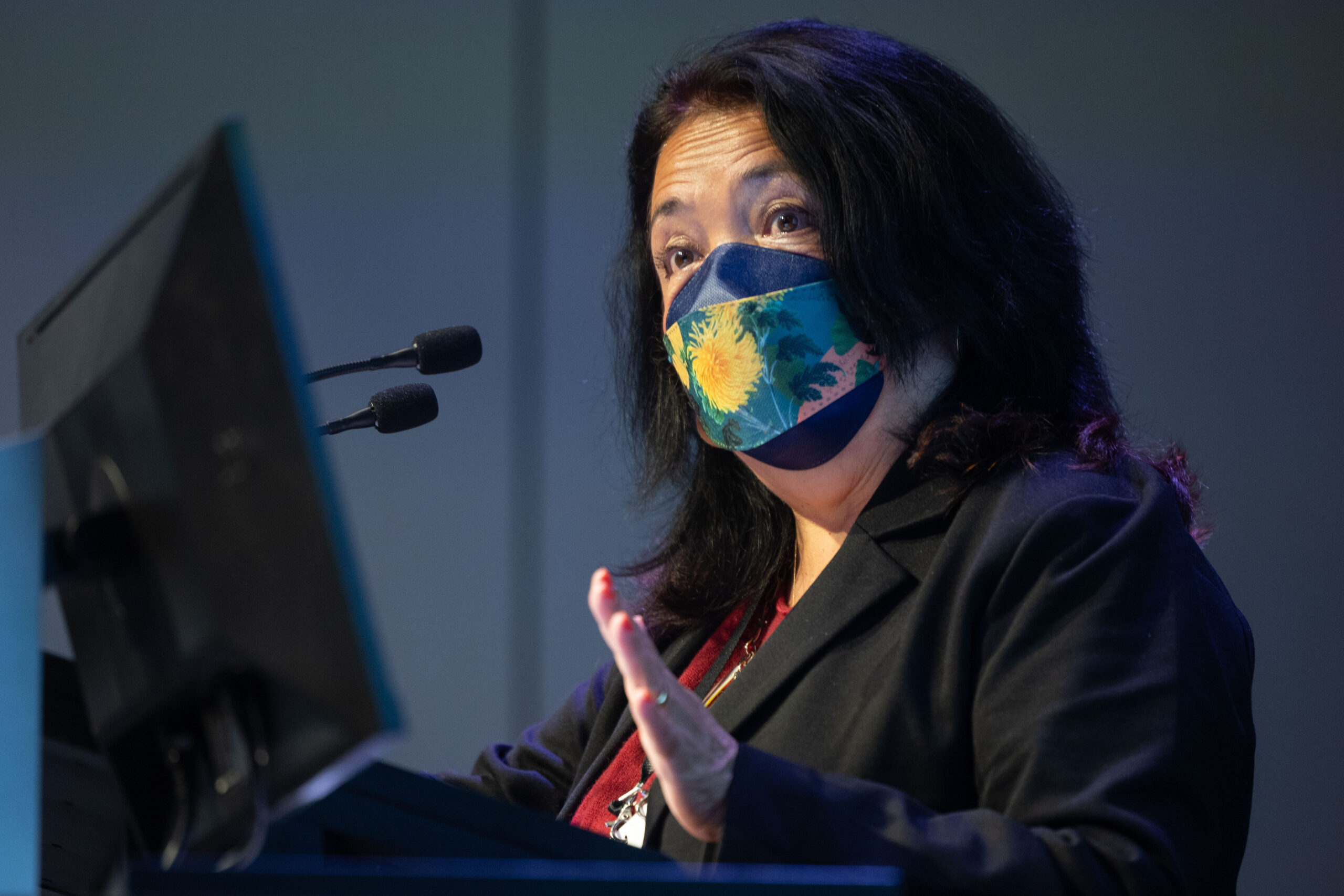
‘All the hospital industry’s fear tactics about how patients would be turned away and hospitals would have to close never happened. California has thrived with safe staffing ratios.’
From that, a rising labour movement had grown as nurses across the US realised they must join forces and organise to win better protections like safe staffing. This movement was gaining momentum globally, Castillo said.
“We can win on safe staffing when we stand together and grow our power. “
Minimum nurse-to-patient ratios were first mandated in California in 1999 after a decade of lobbying by the California Nurses’ Association and a “massive” grassroots movement, she said. They came into effect in 2004 despite “fear-mongering” by health corporates that hospitals would have to close if forced to invest in safe staffing.
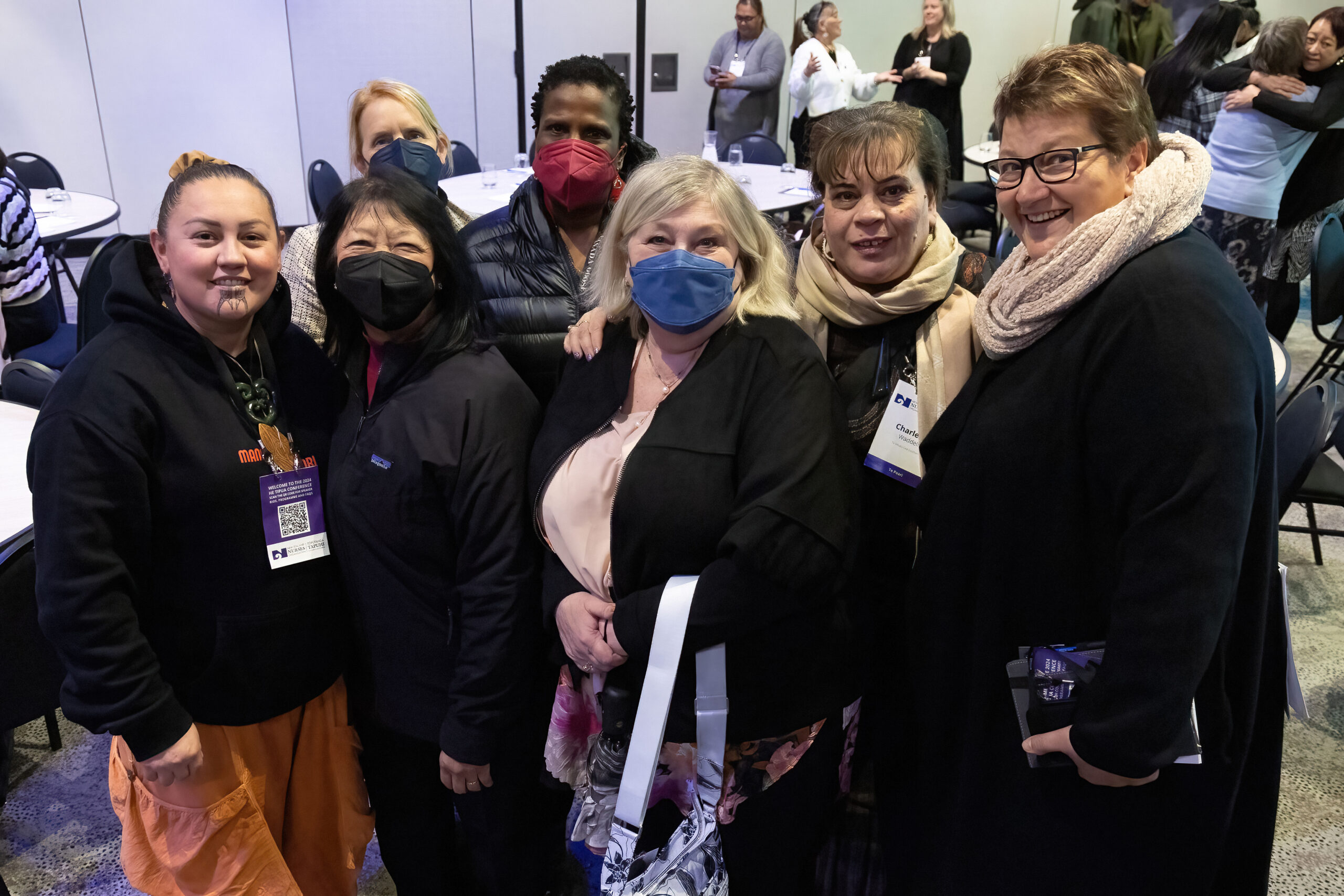
“All the hospital industry’s fear tactics about how patients would be turned away and hospitals would have to close never happened. California has thrived with safe staffing ratios.”
The win “lit a fire” among nurses across the country to push for safe staffing. The New York State Nurses Association achieved a safe staffing law in their state in 2021, while campaigns continue in Maine, Minnesota and Michigan.
National Nurses United membership was now fighting for safe staffing laws to be implemented nationally, Castillo said.
“The science of safe patient care must be carried forward by a movement.”
Māori must be ‘at the table’
NZNO kaiwhakahaere Kerri Nuku said Aotearoa needed an approach to ratios which allowed Māori to “stand proud within the workplace”.
‘Ratios are not going to be implemented unless they have cultural justice connected to it.’
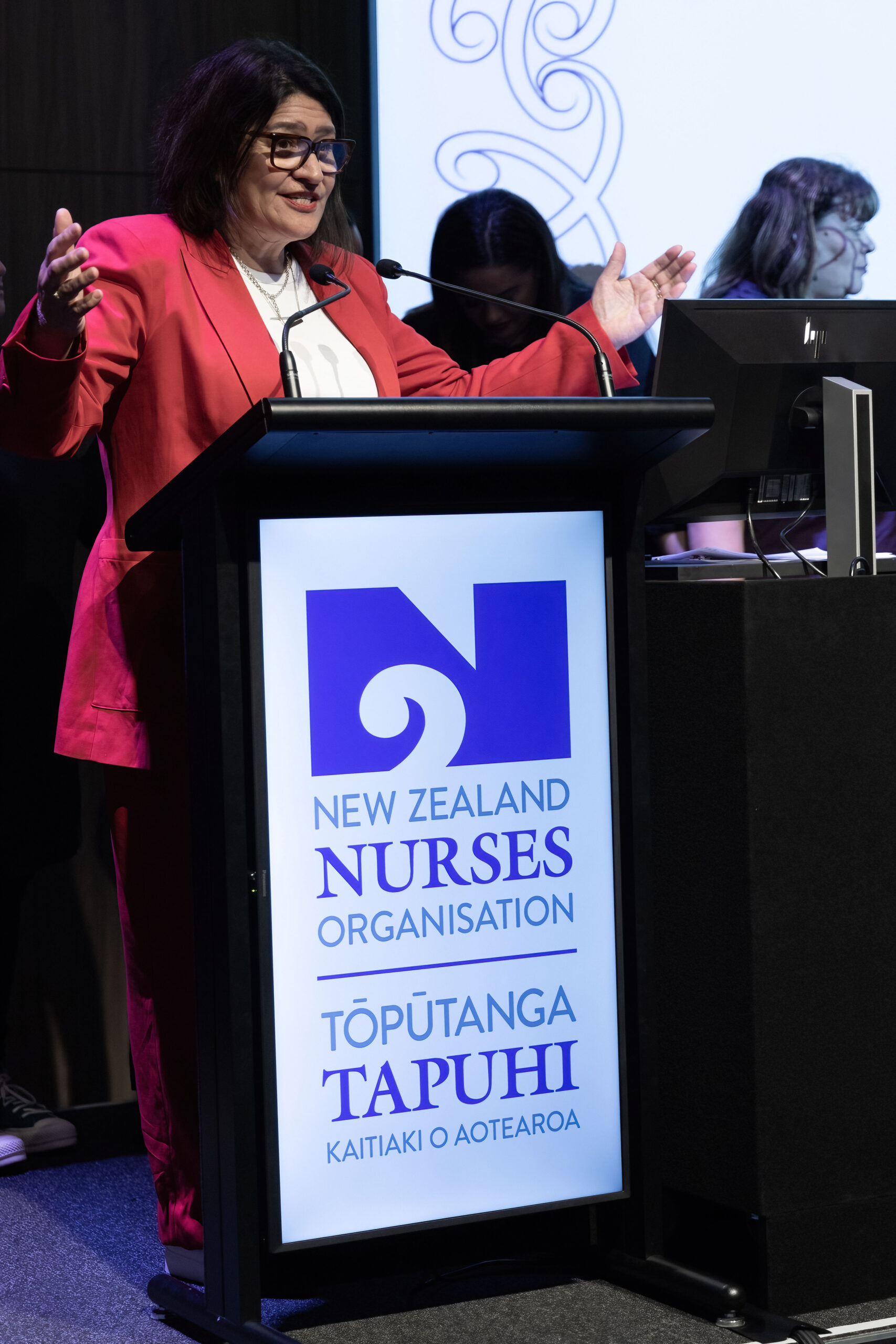
“Ratios are not going to be implemented unless they have cultural justice connected to it.”
How that might look would be part of the kōrero — but Māori needed to be “at the table”, she said.
“There will be no more fighting, we will impose our rights. Our rights to justice. Our rights to a universal declaration that reflects our rights as tāngata whenua Māori. And our rights to be who we need to be in this country.”
Te Poari launched research into culturally safe ratios at the conference.
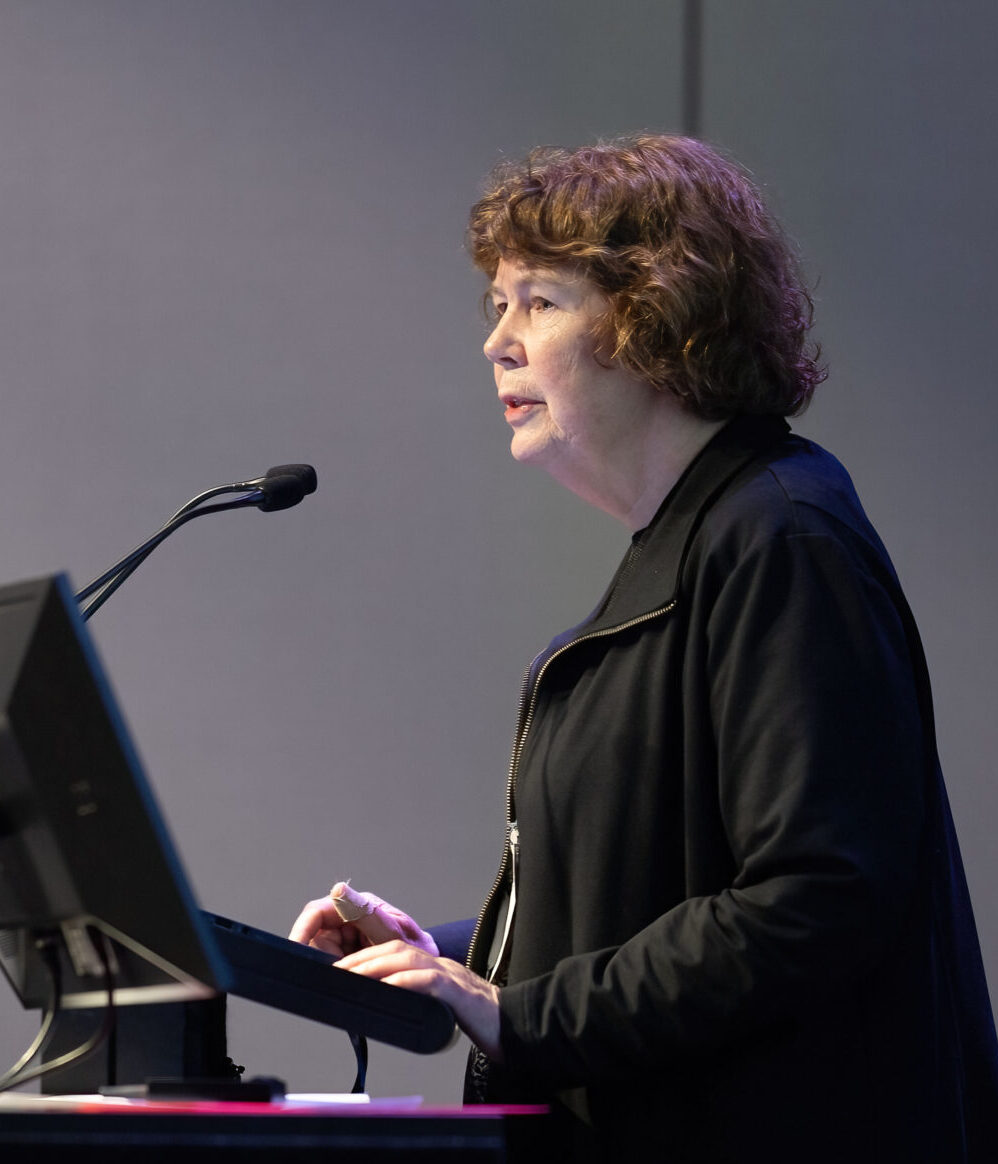
NZNO president Anne Daniels reflected on NZNO’s own safe staffing campaign which began in 2001. The 2006 launch of care capacity demand tool (CCDM) was a hoped-for solution but progress had been slow.
“We need to implement certainty into the budgeting and implementation of safe nursing care. This is our why. We need legislated nurse-patient ratios underpinned by CCDM.”
Watch the conference online here: day one and day two.
